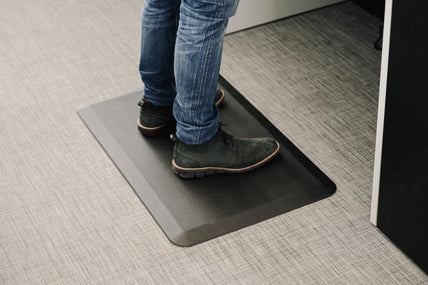OKR - A goal setting framework to dominate 2020
By Daniel Angelini on October 06, 2020What’s the magic behind standing desks?
Research proves time and time again that standing desks can help us perform better. If you’ve experienced a standing desk, you’ll know it gives you space to focus and work in comfort. Imagine if we could have the same structure for your whole business!
Well, we think we’ve found something like it. OKR is a goal setting framework used by companies like Google, Facebook, LinkedIn and many other incredible companies. OKR stands for Objectives and Key Results. It connects your people with the company’s purpose, creates focus on what’s most important and gives a measure to track progress towards your goals.
Using this framework, goals are set quarterly. These goals include an Objective, which is a statement of what is to be achieved. The Key Results, between two and five measures for that objective. Each Key Result is a measure which indicates your progress towards achieving that goal.
How is OKR structured?
Well, simply put:
We will
Achieve an objective
As measured by
These Key Results
As you can see, the underlying concept is really quite simple. But how does it work in practice? Let’s look at a real world example:
Objective: Become the number one accounting provider for Small Business in San Francisco
How does OKR help your business achieve the incredible?
In this competitive landscape and with the challenging year it has been, we all need a way to change the game. We’ve found that OKR helps in 4 key areas:
- Stretch for amazing - The OKR framework requires that we hit about 70% of our Key Results. It means we’re challenging ourselves and accepting a little bit of failure in the process. If we nail all of our goals and score hundred percent, we are sandbagging. Simply put, we are not being ambitious. Anything less than 70%, and were properly not trying hard enough. Allowing teams to safely fail is a critical source of innovation.
- Business wide alignment - Every quarter, a business wide OKR is set. Each team aligns their OKR to this overarching goal. This creates an unstoppable force. Every team aligning their focus to drive the same overarching outcome.
- Sense of progress - Teams feel meaningful progress by using measures which they can move throughout the quarter. A great example is customer satisfaction. With every little improvement we make, we see the satisfaction score increase.
- Directional autonomy - OKRs allow teams to plan their own work, rather than be told what to do. While each team’s OKR aligns to the business wide goal, how they achieve those goals is up to them. They map out their own activities and initiatives to be successful. The hidden benefit is it allows your business to scale at speed. No micromanaging and telling people the specific work to be done. Just agreeing on the outcome.
It’s no wonder some of the world’s leading tech companies are using OKR to drive focus and create incredible outcomes. This is why we believe that the OKR framework is a little bit like a standing desk, but the whole business. It provides the structure to focus on what’s most important, freedom to move to achieve amazing things.
If you’d like to learn more about OKR, check out SKILLFIRE’s Objective and Key Results learning material. Our friends at SKILLFIRE are a Melbourne-based training and advisory firm. They help businesses create strategic clarity, achieve audacious goals and build highpoint teams.










